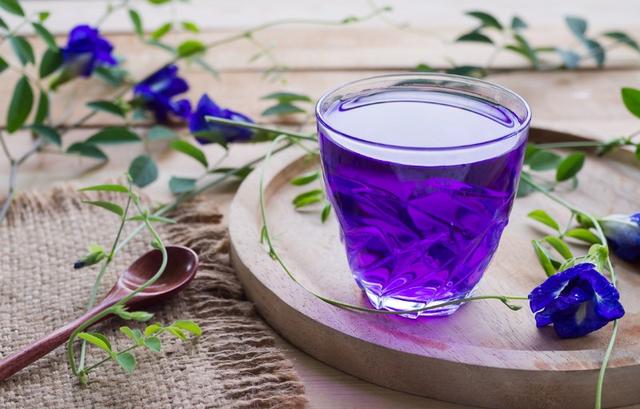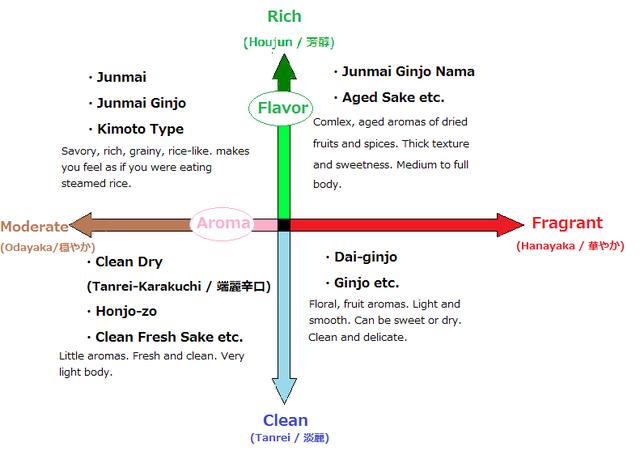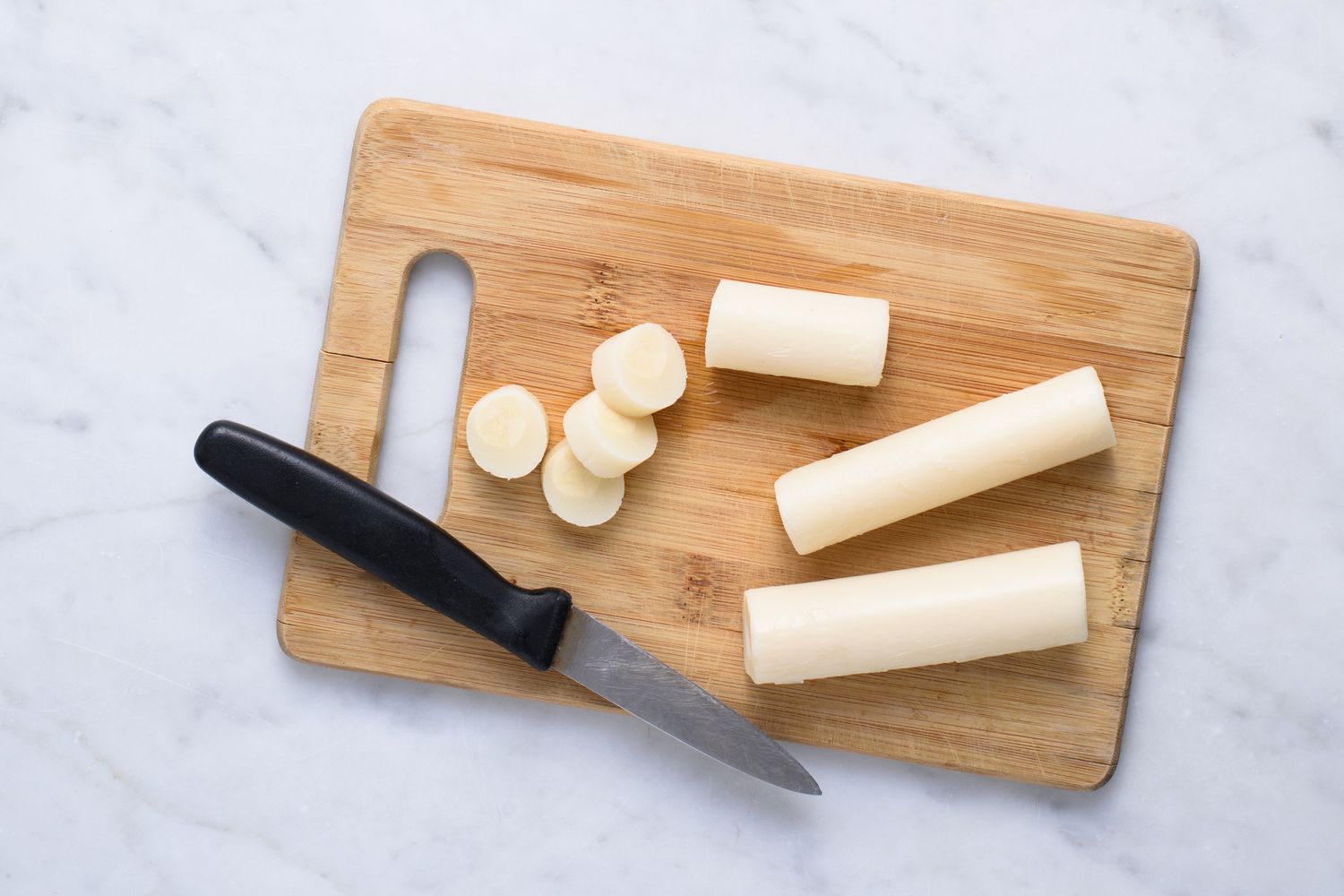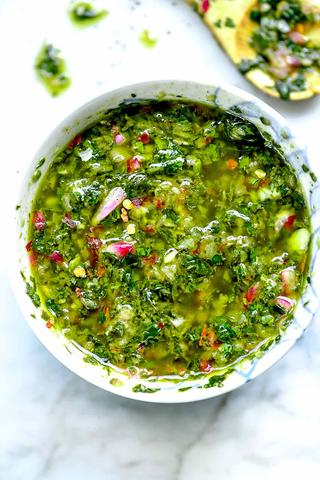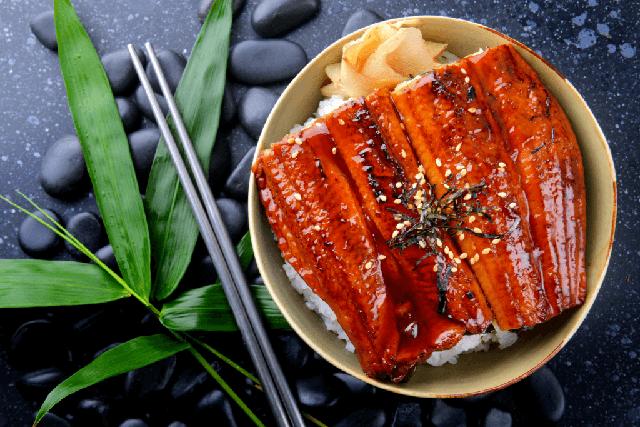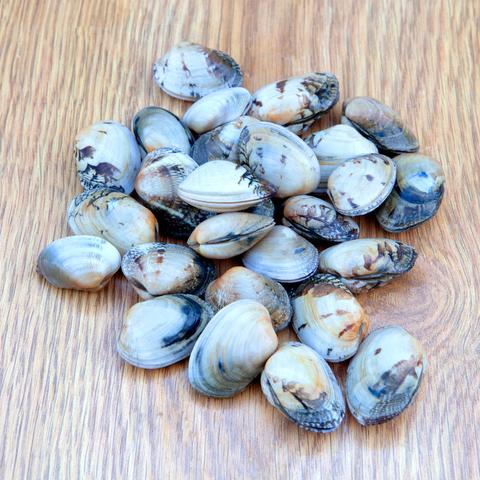
“Unveiling the Flavor of Clams: A Delectable Seafood Delight Revealed! Discover the unique taste and texture of clams, as we delve into their savory profile, offering insights into this beloved seafood delicacy.”
1. Exploring the Flavor Profile of Clams: What Do They Taste Like?

Clams have a unique flavor profile that can be described as a combination of sweetness, saltiness, and minerality. The taste of clams is influenced by the water in which they grow, so the flavor may vary depending on their size and location. Generally, clams have a slightly sweet taste with a hint of saltiness. The mineral notes in their flavor add depth to their overall taste.
Types of Clams:
– Quahog: Also known as cherrystone clams or hard-shell clams, these clams have round white shells.
– Geoduck: These clams have longer oblong shells and can be found in both the Pacific and Atlantic oceans.
– Manila: Found in the Pacific, manila clams are smaller and sweeter compared to Northern quahogs.
– Soft Shell: Also called steamers, soft shell clams have oval dirty white shells and can be found in various locations.
It’s important to note that while there are different types of clams with varying flavors, they all share similar cooking characteristics. Their unique taste makes them a popular choice for various seafood dishes.
Cooking Clams:
When cooking clams, it’s crucial to choose fresh ones with tightly sealed shells. If any shells are slightly open, give them a squeeze shut. Discard any clams that don’t close when squeezed or those that remain shut after cooking.
Clams are often steamed, which allows for gentle cooking that preserves their delicate texture. You can also sear or grill them for a different flavor profile. However, high-heat cooking methods require careful monitoring to prevent overcooking and toughness.
Overall, the flavor of clams is distinct and enjoyable, making them a versatile ingredient in various recipes.
2. Unveiling the Taste of Clams: A Guide to Their Flavor
Clams have a unique flavor that can be described as a combination of sweetness, saltiness, and a hint of minerality. However, it’s important to note that the taste of clams can vary depending on their size and where they are grown.
The flavor of clams is influenced by the water in which they live and grow. Clams that come from saltwater environments tend to have a brinier taste, while those from freshwater sources may have a milder flavor. The level of sweetness and firmness can also differ between different varieties of clams.
For example, quahog clams, also known as hard-shell clams or cherrystone clams, have a slightly sweeter and firmer meat compared to other varieties. Geoduck clams, on the other hand, have a more intense flavor with a pronounced sweetness and brininess.
When cooking with clams, it’s important to consider their flavor profile and choose recipes that complement their taste. They pair well with ingredients like garlic, white wine, butter, and herbs such as parsley or thyme.
Some popular dishes featuring clams include clam chowder, linguine with clam sauce, and steamed clams in broth. These recipes allow the natural flavors of the clams to shine through while incorporating complementary ingredients for a delicious meal.
In summary, the taste of clams is characterized by its sweetness, saltiness, and minerality. The specific flavor profile can vary depending on the variety of clam and its growing environment. Understanding these nuances can help you create dishes that highlight the natural flavors of this versatile shellfish.
3. The Unique Taste of Clams: A Deep Dive into their Flavor
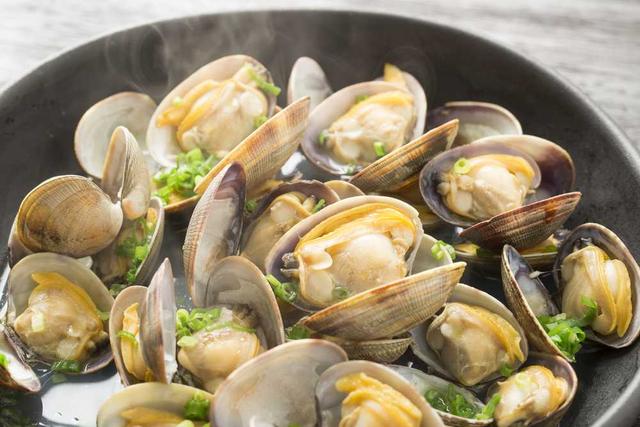
Clams have a unique taste that is often described as a combination of sweetness, saltiness, and minerality. Their flavor profile can vary depending on the type of clam and the water in which they are grown.
– Sweetness: Clams have a natural sweetness that adds depth to their flavor. This sweetness is more pronounced in smaller clams like manila clams.
– Saltiness: Clams have a slightly salty taste, which enhances their overall flavor. The level of saltiness can vary depending on the variety and where they are harvested.
– Minerality: Clams also have a subtle mineral taste that comes from the water in which they grow. This minerality adds complexity to their flavor and makes them distinct from other types of shellfish.
It’s important to note that the flavor of clams can be influenced by factors such as size, location, and cooking method. Larger clams may have a stronger flavor compared to smaller ones, while clams harvested from different regions may have slight variations in taste.
In summary, clams offer a unique combination of sweetness, saltiness, and minerality that make them a delicious choice for seafood lovers. Whether steamed, grilled, or used in various recipes, their distinct flavor adds depth and complexity to any dish they are featured in.
4. Discovering the Delicate Flavors of Clams: What to Expect
Clams have a delicate flavor that is often described as slightly sweet, slightly salty, and slightly minerally. The taste of clams can vary depending on their size and where they are grown, as it reflects the characteristics of the water in which they live.
When cooked, clams retain their natural sweetness and develop a tender texture. They are commonly used in a variety of dishes such as pasta, soups, stews, and chowders. The flavor of clams pairs well with ingredients like garlic, butter, white wine, and herbs like parsley and thyme.
Clams also have a unique brininess that adds depth to dishes. This briny taste comes from the saltwater environment in which they live. It is important to note that while some people enjoy this brininess, others may find it too strong or overpowering.
Overall, when cooking with clams, you can expect a delicate balance of sweetness, saltiness, minerality, and brininess that adds complexity to your dishes. Whether steamed, sautéed, baked or grilled, clams bring a unique flavor profile to any recipe they are used in.
To fully appreciate the delicate flavors of clams, it is recommended to pair them with complementary ingredients that enhance their natural taste. Experimenting with different cooking methods and seasonings can help you discover new ways to enjoy the distinct flavors that clams have to offer.
Some popular recipes using clams include linguine with clam sauce, clam chowder, clam bake or boil, and stuffed clams (also known as clam casino). These recipes showcase the versatility of clams and allow their flavors to shine through.
Whether you’re a seafood enthusiast or just beginning to explore the world of shellfish cuisine, incorporating clams into your meals provides a delightful experience for your taste buds. So go ahead and dive into the delicate flavors of clams, and discover the culinary possibilities they offer.
5. From Sweet to Salty: Understanding the Taste of Clams
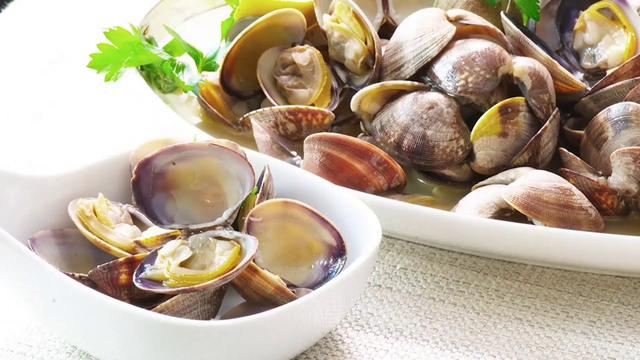
When it comes to the taste of clams, there are variations depending on the variety and where they grow. Generally, clams have a flavor that is slightly sweet, slightly salty, and slightly minerally. The taste of clams can also reflect the water in which they are grown. Clams that grow in saltwater may have a brinier flavor compared to those that grow in freshwater.
The level of sweetness, firmness, and brininess can vary depending on the size and location of the clam. For example, littleneck clams or cherrystone clams are known for their mild sweetness and tender texture. On the other hand, geoduck clams have a stronger flavor and firmer texture.
It’s important to note that different cooking methods can also affect the taste of clams. Steaming or simmering them in broth or wine can enhance their natural flavors, while grilling or searing may add smoky or charred notes.
Overall, the taste of clams is unique and can be enjoyed in various dishes such as clam chowder, pasta with clam sauce, or simply steamed with butter and herbs.
Here are some key points about the taste of clams:
– Varieties of clams can have different levels of sweetness, saltiness, and brininess.
– The taste of clams reflects the water in which they grow.
– Cooking methods can enhance or alter the flavor of clams.
– Clam dishes range from mild and delicate to rich and savory.
Whether you prefer your seafood on the sweeter side or enjoy a briny kick, there is likely a variety of clam that will suit your taste buds. Exploring different recipes and cooking techniques can help you discover your favorite way to enjoy these delicious bivalves.
6. Demystifying the Flavor of Clams: A Comprehensive Guide
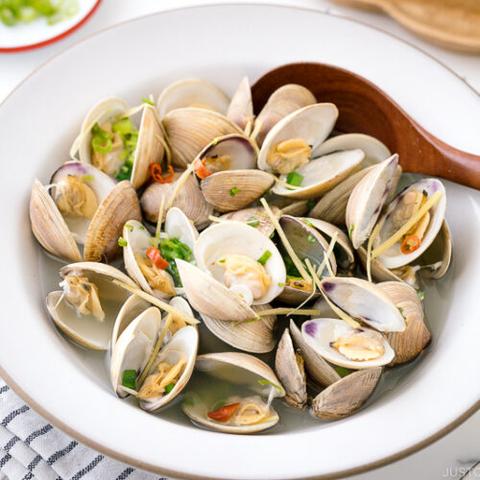
Clams are known for their distinct flavor, which can vary depending on the variety and where they are harvested. Generally, clams have a slightly sweet taste with a hint of saltiness. The flavor is also influenced by the water in which they grow, giving them a unique minerally taste.
Factors Affecting Clam Flavor
1. Size: The size of the clam can affect its flavor. Smaller clams tend to be sweeter and more tender compared to larger ones.
2. Location: Clams that grow in different regions may have different flavors due to variations in water quality, temperature, and nutrients.
3. Environment: Clams that are farmed or grown in controlled environments may have a milder flavor compared to wild-caught clams.
Popular Varieties of Clams and Their Flavors
1. Quahog: This variety of clam has a firm texture and a slightly briny flavor.
2. Geoduck: Geoduck clams have a sweet and buttery taste with a crisp texture.
3. Manila: Manila clams are known for their delicate sweetness and tender meat.
4. Soft Shell: Soft shell clams, also known as steamers, have a mild and slightly salty flavor.
Cooking Clams to Enhance Flavor
To bring out the best flavors in clams, it’s important to cook them properly:
1. Steaming: Steaming is the most common method for cooking clams as it allows them to retain their natural juices and flavors.
2. Sautéing or Stir-frying: Cooking clams quickly over high heat can help intensify their flavors while maintaining their tenderness.
3. Adding Aromatics: Enhance the flavor of clams by adding garlic, onions, herbs, or spices during the cooking process.
Pairing Clams with Other Ingredients
Clams can be paired with a variety of ingredients to create delicious dishes:
1. Pasta: Clams are often combined with pasta, creating classic dishes like linguine with clam sauce.
2. Soups and Chowders: Clams add depth and flavor to soups and chowders, such as New England clam chowder.
3. Seafood Stews: Combining clams with other seafood like shrimp, mussels, or fish in a stew can create a rich and flavorful dish.
In conclusion, understanding the flavor of clams allows you to appreciate their unique taste and experiment with different cooking methods and pairings. Whether you prefer them steamed, sautéed, or in a hearty soup, clams offer a delightful culinary experience.
7. A Closer Look at Clam Tastes: What You Need to Know
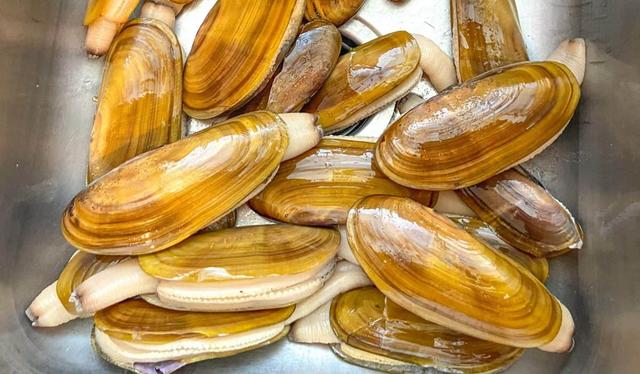
When it comes to the taste of clams, there are a few things to consider. While varieties may differ, clams are generally described as having a slightly sweet, slightly salty, and slightly minerally flavor. The taste of clams can also reflect the water in which they grow, adding unique characteristics to their flavor profile.
The level of sweetness, firmness, and brininess of clams may vary depending on their size and where they are harvested. For example, littleneck clams or cherrystone clams have a familiar round shape and white shells. They tend to have a balanced flavor with moderate sweetness and saltiness.
On the other hand, soft shell clams or steamers have oval-shaped shells that are dirty white in color. These clams have a softer texture and a sweeter taste compared to other varieties.
Geoducks, which have longer oblong shells, offer a more distinct flavor with pronounced sweetness and brininess. Manila clams are smaller and sweeter than Northern quahogs, making them popular for various recipes.
It’s important to note that the taste of mussels is not often described with such distinctions because many mussels are farmed in controlled environments. This reduces their exposure to fluctuations in their natural environment that could affect their flavor.
Overall, both clams and mussels offer unique tastes that can enhance various dishes. Whether you prefer the slightly sweet and salty flavor of clams or the plump meaty texture of mussels, these bivalves can be enjoyed in a variety of culinary preparations.
8. Unlocking the Secrets of Clam Flavors: Everything You Should Know
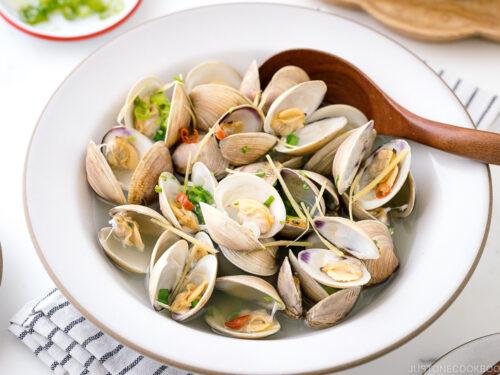
Clams are known for their unique flavor, which can vary depending on the variety and where they are harvested. Here are some key points to help you understand and appreciate the flavors of clams:
1. Sweetness:
Clams have a natural sweetness that is often described as subtle and delicate. This sweetness comes from the natural sugars present in the clam meat.
2. Saltiness:
Clams also have a slight saltiness to their flavor, which adds depth and enhances their overall taste. The saltiness can vary depending on the type of water they are harvested from.
3. Minerality:
Some clams have a hint of minerality in their flavor, which is influenced by the minerals in the water they inhabit. This minerality can give clams a unique and earthy taste.
4. Size Matters:
The size of the clam can also impact its flavor profile. Smaller clams tend to be sweeter and more tender, while larger clams may have a stronger flavor and chewier texture.
5. Cooking Method:
The way clams are cooked can also affect their flavors. Steaming or cooking them in low amounts of liquid preserves their natural flavors, while high-heat methods like searing or grilling can add smoky and charred notes to the taste.
6. Pairings:
Clams pair well with a variety of ingredients, including garlic, butter, white wine, lemon juice, herbs like parsley or thyme, and even spicy flavors like chili flakes or hot sauce. These complementary flavors can enhance the natural taste of clams.
In conclusion, unlocking the secrets of clam flavors involves understanding their inherent sweetness, saltiness, and minerality, as well as considering their size and cooking method. By experimenting with different pairings and cooking techniques, you can fully appreciate the unique flavors that clams have to offer.
9. Diving into the Taste Experience of Clams: An Exploration
Clams are known for their unique taste experience that combines sweetness, saltiness, and a hint of minerality. The flavor of clams is influenced by the water in which they grow, resulting in variations in sweetness, firmness, and brininess. Different varieties of clams can offer slightly different taste profiles.
Types of Clams:
– Quahog: Also known as cherrystone clams or hard-shell clams, quahogs have round white shells and a slightly sweet and briny flavor.
– Geoduck: Geoducks have longer oblong shells and offer a more pronounced flavor compared to other clam varieties.
– Manila: Found in the Pacific, manila clams are smaller and sweeter than Northern quahogs.
– Soft shell: Commonly called steamers, soft shell clams have oval dirty white shells and a delicate flavor.
When cooking with clams, it’s important to choose the freshest option available. Look for tightly sealed shells, indicating that the clams are still alive. If any shells are slightly open, give them a squeeze shut. Discard any clams that do not close.
Cooking clams is usually done through steaming. This gentle cooking method ensures that the soft-bodied shellfish retain their tenderness. The resulting cooking liquid from steaming is often as delicious as the clams themselves.
While mussels have a similar texture to clams, they offer a distinct taste profile. However, if you’re unable to find one or the other for a recipe, you can generally substitute them without major issues.
In conclusion, exploring the taste experience of clams reveals their unique combination of sweetness, saltiness, and minerality. With various types of clams available, each offering its own flavor profile, there is plenty to discover and enjoy. Whether steamed or prepared in other ways, clams provide a delicious addition to any seafood dish.
10. Exploring the Palate-Pleasing Tastes of Clams
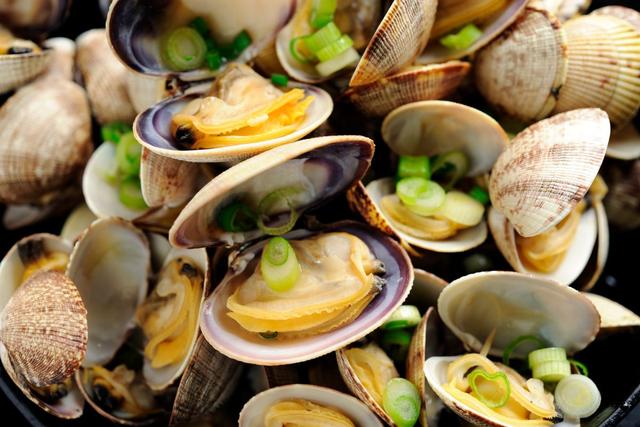
Clams are known for their unique flavor profile that is both sweet and salty, with a hint of minerality. The taste of clams can vary depending on the variety and where they are harvested. Some clams have a stronger brininess, while others are milder and sweeter in flavor.
When cooked, clams develop a tender and slightly chewy texture that is highly satisfying to bite into. The meat of the clam is juicy and succulent, making it a delightful addition to various dishes.
One popular way to enjoy the taste of clams is in chowder. The creamy base of the chowder complements the natural sweetness of the clams, creating a comforting and flavorful soup. Clam chowder is often made with potatoes, onions, bacon, and other ingredients that enhance the overall taste.
Another classic dish that showcases the deliciousness of clams is linguine alle vongole. This Italian pasta dish combines al dente linguine with fresh clams, garlic, white wine, and parsley. The briny flavors of the clams infuse into the pasta, creating a harmonious balance between seafood and pasta.
For those who prefer lighter preparations, steamed or grilled clams can be enjoyed on their own or as part of a seafood platter. Steaming brings out the natural sweetness of the clams while preserving their tender texture. Grilling adds a smoky char that enhances their overall flavor.
In addition to these traditional dishes, there are endless possibilities for incorporating clams into your culinary creations. They can be used in soups, stews, stir-fries, or even as toppings for pizzas or pastas. Their versatile taste makes them suitable for both simple weeknight meals and elegant dinner parties.
Whether you’re a fan of their sweet-salty flavor or looking to explore new taste sensations, clams offer a palate-pleasing experience that is sure to delight seafood lovers. Their unique taste and texture make them a versatile ingredient that can elevate any dish with their distinct flavors.
11. Cracking Open the Flavors of Clams: A Journey into their Taste
Clams and mussels may look similar, but their taste profiles are distinct. Clams have a slightly sweet, salty, and minerally flavor that reflects the water in which they grow. The level of sweetness, firmness, and brininess can vary depending on the size and location of the clam. On the other hand, mussels are not often described with such distinctions because many are farmed in controlled environments that minimize fluctuations in taste.
When it comes to varieties, there are over 150 different kinds of clams. Some common edible varieties include quahog, geoduck, manila, and soft shell clams. Quahogs have round white shells, while geoducks have longer oblong shells. Manila clams are smaller and sweeter than Northern quahogs, while soft shell clams have oval dirty white shells.
Mussels also come in various types with around 17 edible species. Blue mussels are in season during winter and spring and have a strong flavor. Mediterranean mussels have large shells and plump meat. New Zealand green-lipped mussels, largely farmed in New Zealand as suggested by their name, have green-tinted shells.
While clams and mussels do taste slightly different from each other, they can generally be substituted for one another in recipes due to their similarities. However, if you’re comparing mussels to the sweet varieties of clams, there will be noticeable differences in taste.
To ensure freshness when choosing clams or mussels for cooking, look for tightly sealed shells that indicate they are still alive. If any shells are slightly open, give them a squeeze shut; discard those that don’t close. Both clams and mussels should be cooked until the shells open fully – any remaining closed shells should be discarded.
The most common way to cook clams and mussels is by steaming them. Steaming allows for gentle cooking, which is ideal for these soft-bodied shellfish. It also results in a flavorful cooking liquid that can be enjoyed alongside the shellfish. Searing or grilling are alternative cooking methods, but it’s important to watch closely to prevent overcooking and toughness.
In conclusion, while clams and mussels have their differences in appearance and taste, they can often be used interchangeably in recipes. The key is to choose the freshest option available and cook them properly to bring out their delicious flavors.
In conclusion, clams have a unique and delicate taste that is often described as slightly sweet and briny. Their flavor can vary depending on the species and cooking method, but they are generally enjoyed for their tender texture and subtle oceanic essence. Whether steamed, sautéed, or used in various dishes, clams offer a delightful culinary experience for seafood enthusiasts.
Learn More About Grilling
If you want to learn more about grilling, check out these other helpful resources!

